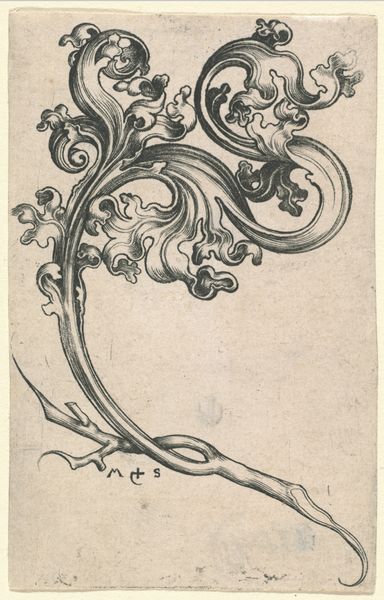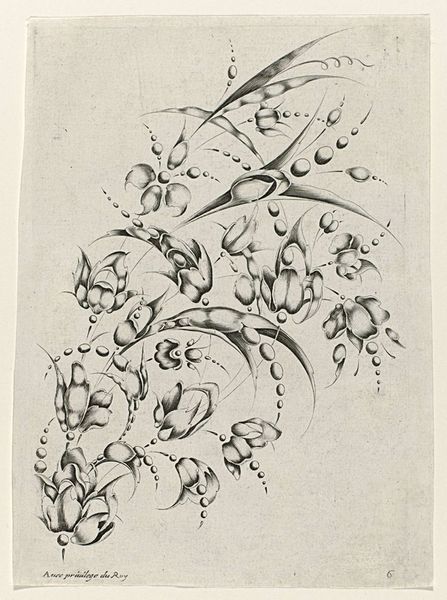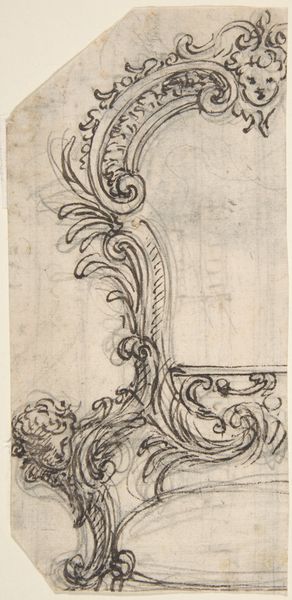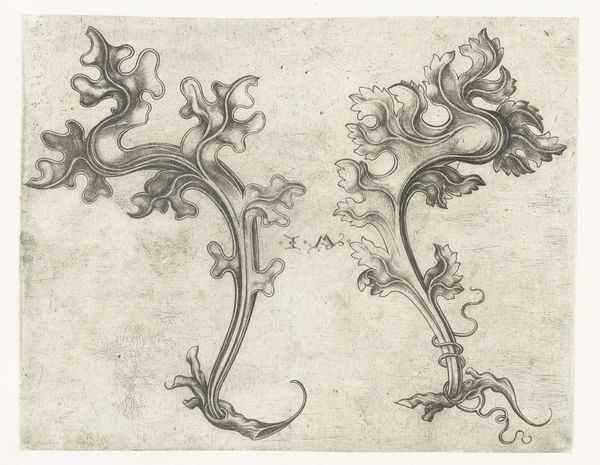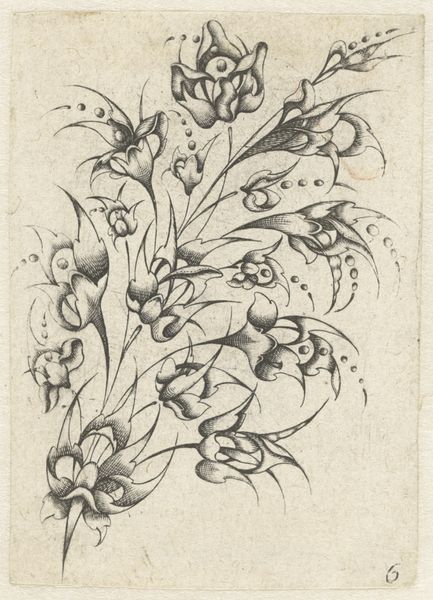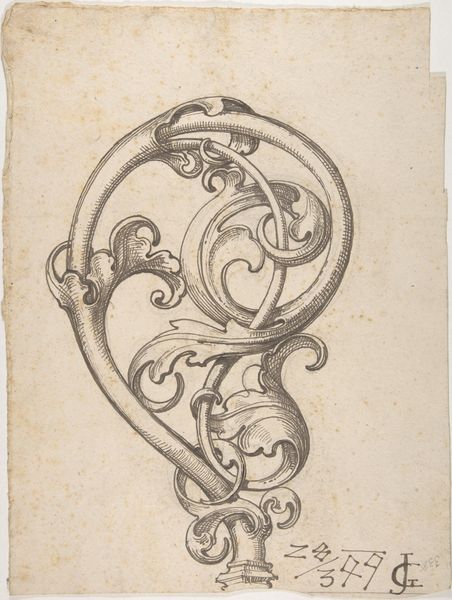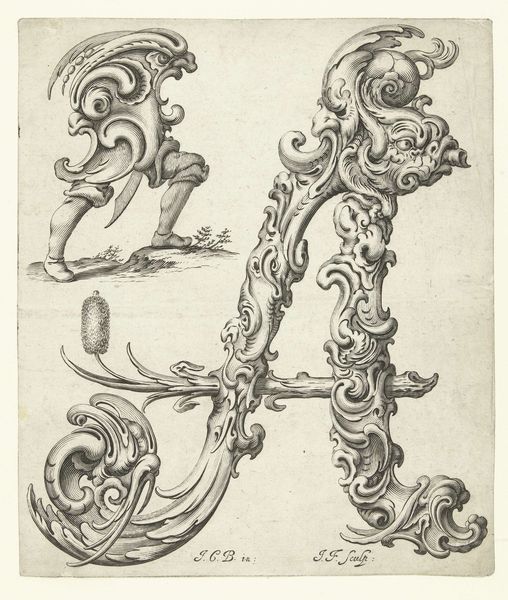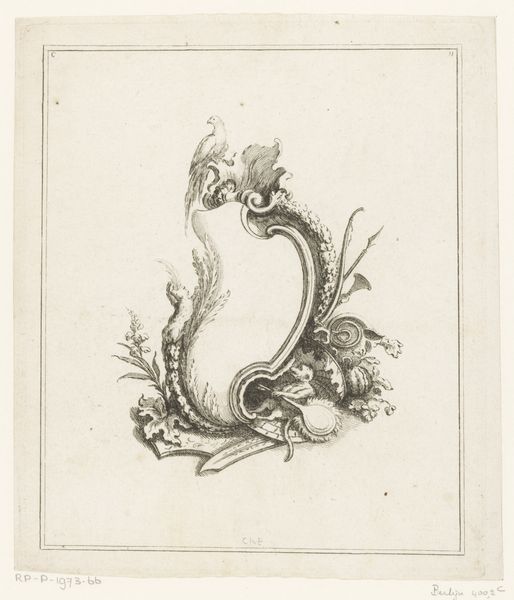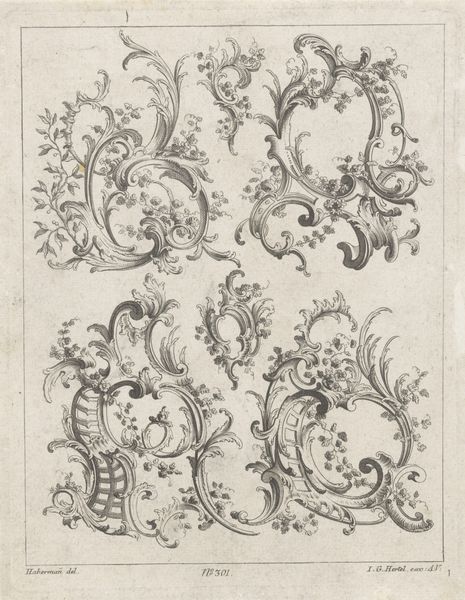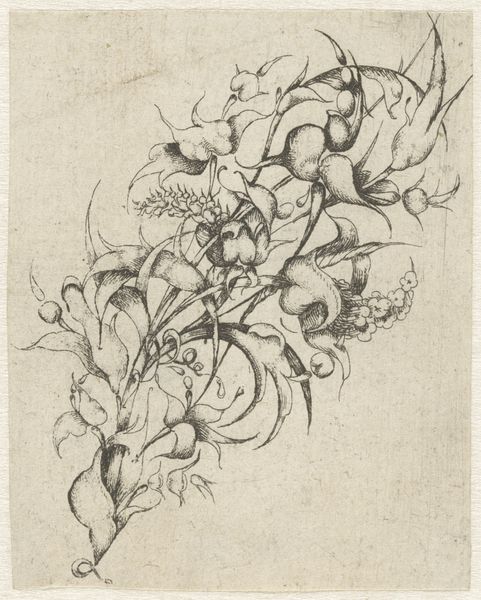
ornament, print, engraving
#
ornament
#
pen drawing
# print
#
pen illustration
#
pen sketch
#
old engraving style
#
11_renaissance
#
geometric
#
line
#
northern-renaissance
#
engraving
Dimensions: sheet: 13.5 × 9.3 cm (5 5/16 × 3 11/16 in.)
Copyright: National Gallery of Art: CC0 1.0
Curator: At first glance, I find this absolutely gorgeous, though I confess, my initial reaction is, "Wallpaper!" In all seriousness though, the 'Thistle Ornament', likely by Martin Schongauer, showcases his mastery of line in printmaking. It's just lines, etched, yet suggesting light, volume, depth. Editor: You know, I get what you mean by wallpaper; there's a definite repeating motif feeling to it. But hold on a second—that's an insult to the incredible artistry in the print work. The skill and confidence on display are masterful, particularly given this piece dates back to the Renaissance era. The level of detail he manages is startling! Curator: Absolutely! Prints like this fulfilled a crucial social function back then. In a pre-photographic era, it allowed for wider access to designs and patterns that might be used by artisans in different fields such as metalworking and painting. Disseminating artistic ideas, basically. Schongauer himself ran a very successful workshop in Colmar. Editor: So it's like visual sampling before electronic music was a thing. Did people in Colmar at the time really stop to appreciate what this thing really meant as art? You know? That even a piece designed as "useful" can speak volumes if looked at carefully. It almost makes you think that these kind of geometric abstractions in prints or artworks allowed humans to think in new directions. Curator: Well, assessing contemporary views on the print's artistic value presents challenges. Print collecting certainly existed, although prints also functioned as affordable substitutes for paintings, appealing to a broader audience. These designs, readily available and relatively inexpensive, democratized art ownership and access. Editor: Democratization. You really can't underestimate the importance of this! Looking closely now, at the almost brutal definition with such minimalist methods. Thinking of the Northern Renaissance as stuffy? Take another look. Martin seems to embrace a kind of expressive potential. It isn't mere cold-blooded function! Curator: I agree entirely. Even within a functional object, there's incredible scope for individual expression. It shows the intricate relationship between the economic, the social, and the aesthetic. The Thistle ornament shows you a world of commerce. Editor: This little thistle suddenly feels vast, its branches sprawling into everything. So, there is so much in an artifact which feels as small and unimportant as some old piece of wallpaper.
Comments
No comments
Be the first to comment and join the conversation on the ultimate creative platform.
